Sampson Mordan & Co
Sampson Mordan was born in 1790. After some years of apprenticeship, he established his own business in 1815, and joined forces with John Isaac Hawkins by 1822; together they filed a patent for a metal pencil with an internal lead propelling mechanism. Unlike the pencil’s popularity and longevity, their business relationship did not last much longer, with Mordan buying out Hawkins soon-after.
Mordan registered his own silver mark in 1823 and then entered into partnership with stationer Gabriel Riddle. Under the name of S. Mordan & Co, and based at 22 Castle Street, City Road, London, they manufactured and retailed many writing and stationery related goods, particularly their silver mechanical pencils.
The name S. Mordan & Co is also associated with lock making. Mordan had apprenticed with the great locksmith Joseph Bramah at the start of the 19th century, and thus he became an expert lock maker in his own right. With Bramah’s lock design patents having long expired, Mordan manufactured almost exact replicas of these locks, known as Bramahrian Patent locks, applying his own design variations and patented improvements. These proved highly popular: they were durable, secure and un-pickable; the keys were complicated to replicate and imperviousness to duplication from wax seal impressions.
The partnership between Mordan and Riddle dissolved at the end of 1836. However, Mordan continued the business under the same name. He became very successful, building up a large repertoire of fancy, as well as functional, manufactured goods. Around 1842, he opened a dedicated retail premises at 50 Cheapside, London (which in 1854 was renumbered to 72 Cheapside).
Mordan died in 1843. He left his business in the hands of his two sons, Sampson Mordan Jr and Augustus Mordan.
By 1865, the Mordan’s manufactory was based at 41 City Road, London, and later expanded to include No. 43. At some point the two brothers were joined in partnership by Edmund George Johnson and Zachariah Watkins, but this partnership is documented to have been dissolved in 1879.
Sampson Mordan Jr retired shortly afterwards, and died in 1881, leaving full control of the company to Augustus. Around this time, the partnership of S. Mordan & Co consisted of Augustus Mordan, Edmund George Johnson, Horace Stewart, Henry Lambert Symonds and James Pulley. In 1884, Augustus Mordan retired, leaving the partners to continue the business, still retaining its original name.
In 1898, S. Mordan & Co became a limited company under the control of Symonds and Pulley, absorbing the gold and silversmith firm of Johnson, Sons & Edmonds. A year later, this partnership dissolved leaving Symonds as the director. The manufactory based at 41 & 43 City Road, London, was rebuilt in 1900, accompanying the opening of their showrooms at 9 & 11 Warwick Street, London.
S. Mordan & Co Ltd finally stopped trading in 1941 when their manufactory was bombed during the Second World War.
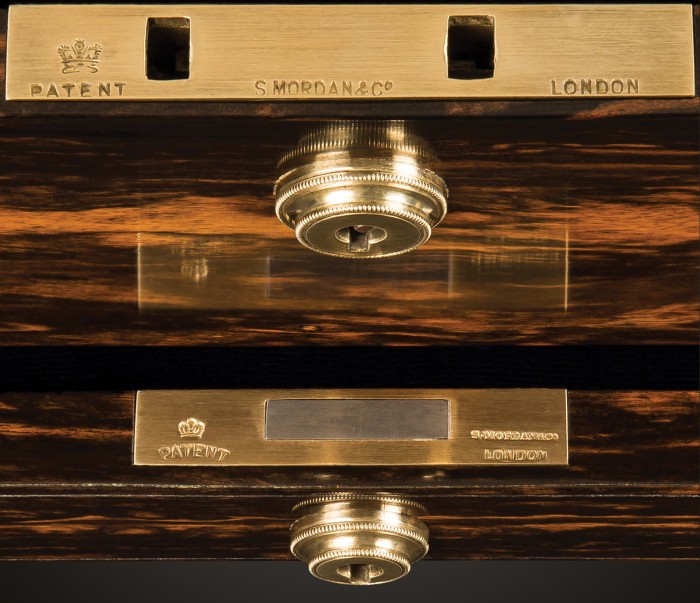
S. Mordan & Co. Patent locks from an antique jewellery box in coromandel, by Asprey.

S. Mordan & Co. lock from an antique jewellery box in coromandel with countess coronet, by Jenner & Knewstub.

S. Mordan & Co. Patent lock from an antique jewellery box in burr walnut.
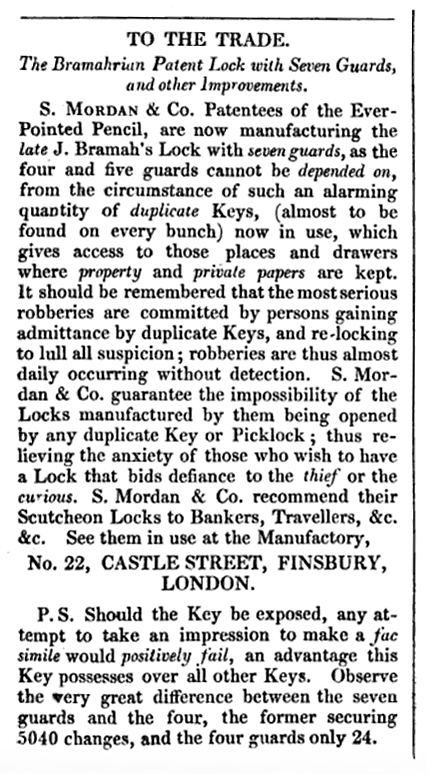
Advertisement for ‘The Bramahrian Patent Lock with Seven Guards and other Improvements’ by S. Mordan & Co. from 1830.
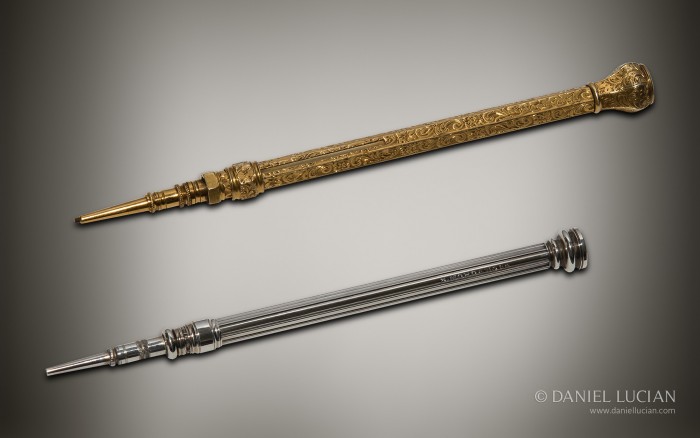
Antique S. Mordan & Co. propelling pencils.
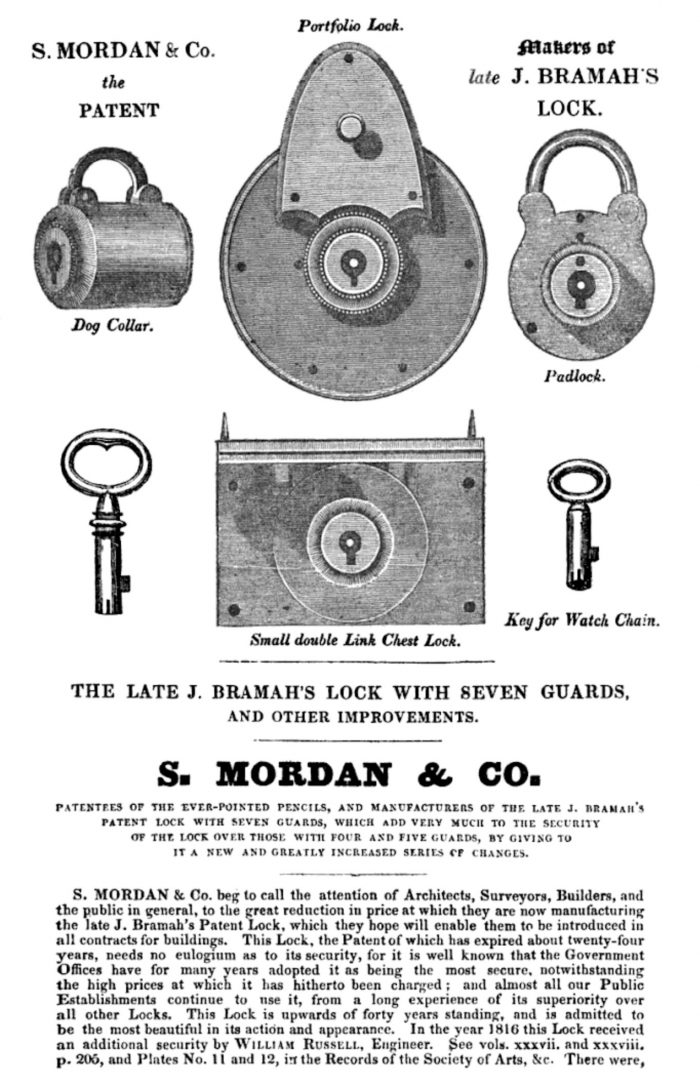
S. Mordan & Co. advertisement from 1829.
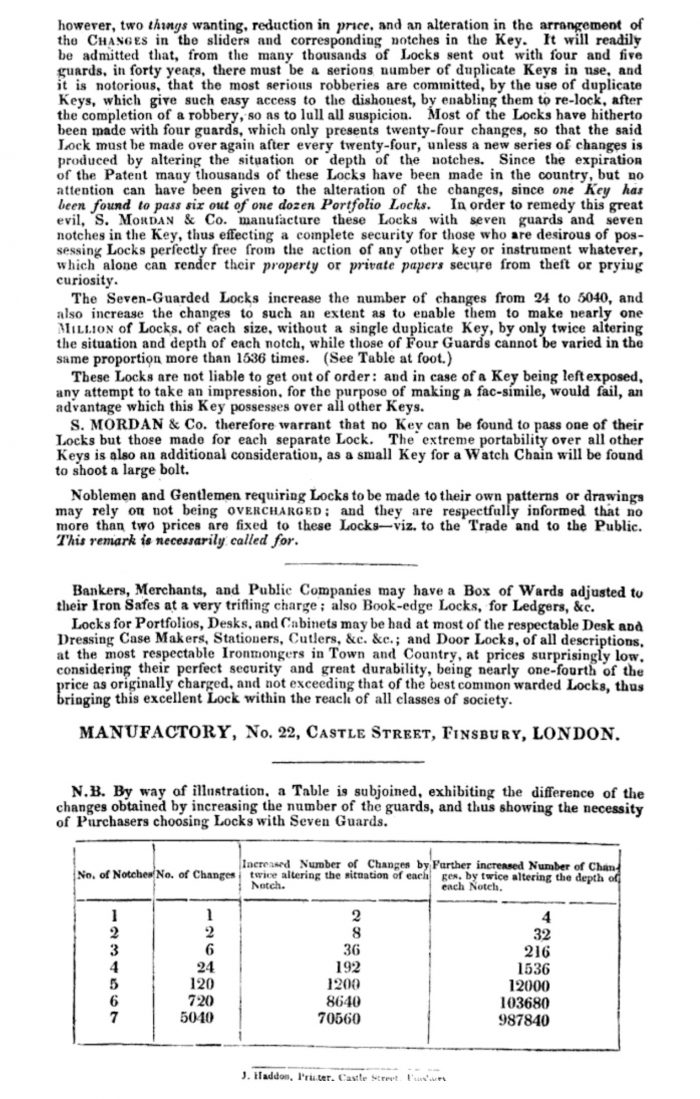
S. Mordan & Co. advertisement from 1829.
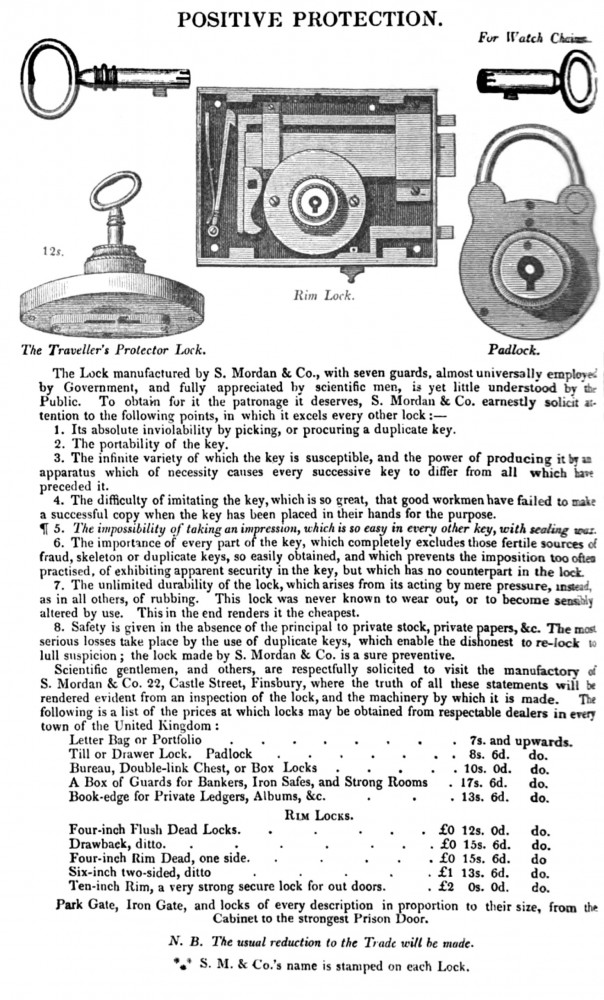
S. Mordan & Co. advertisement from 1831.
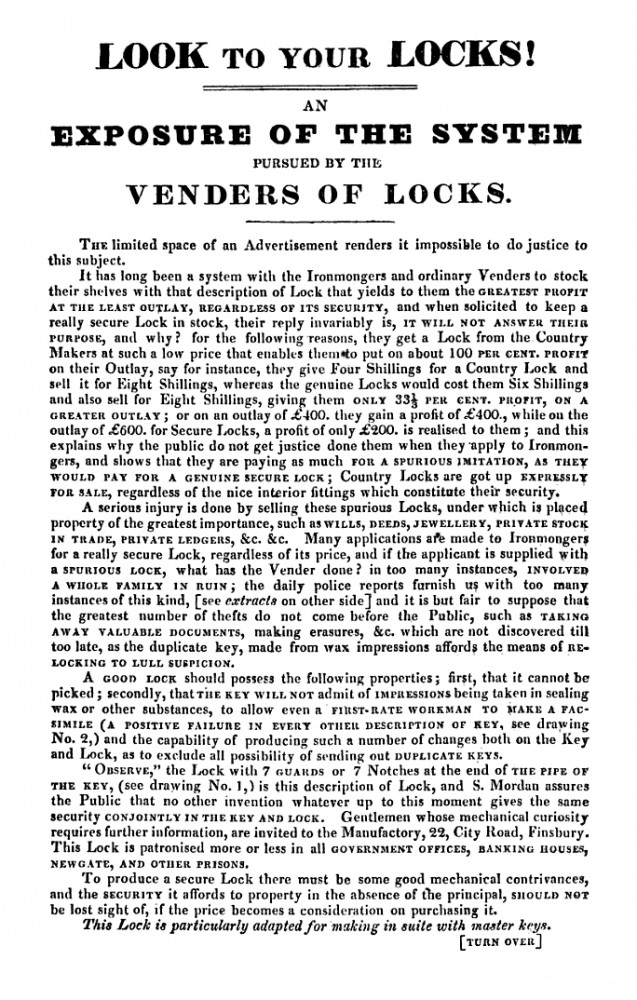
S. Mordan & Co. advertisement from 1835.
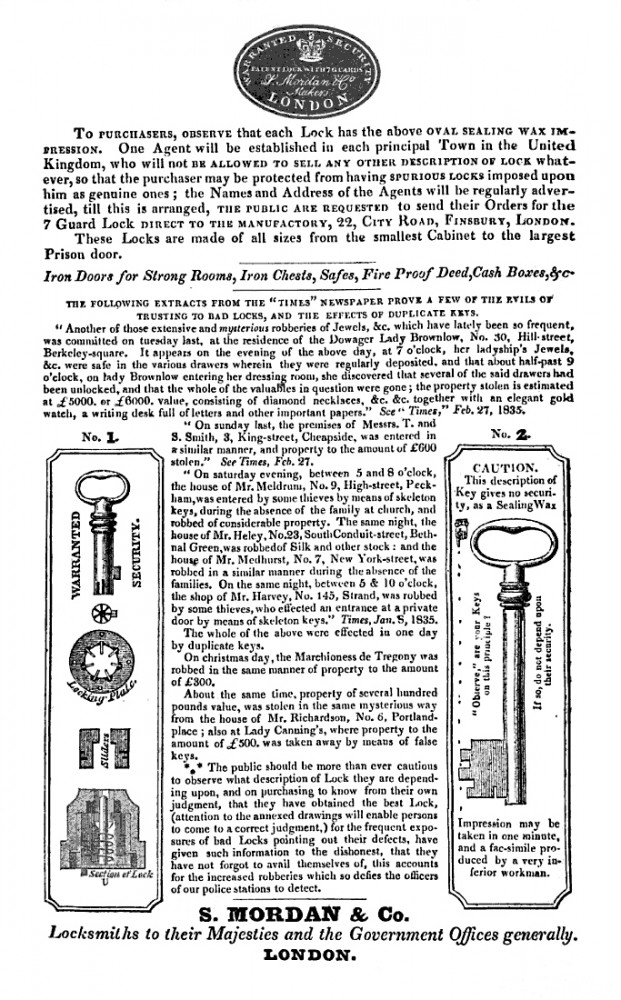
S. Mordan & Co. advertisement from 1835.
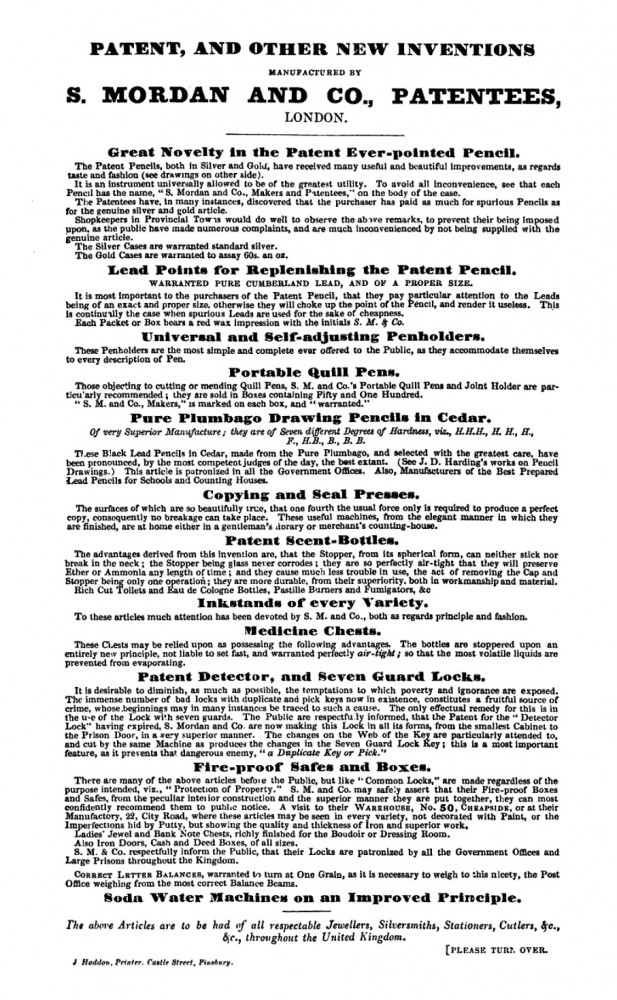
S. Mordan & Co. advertisement from 1843.
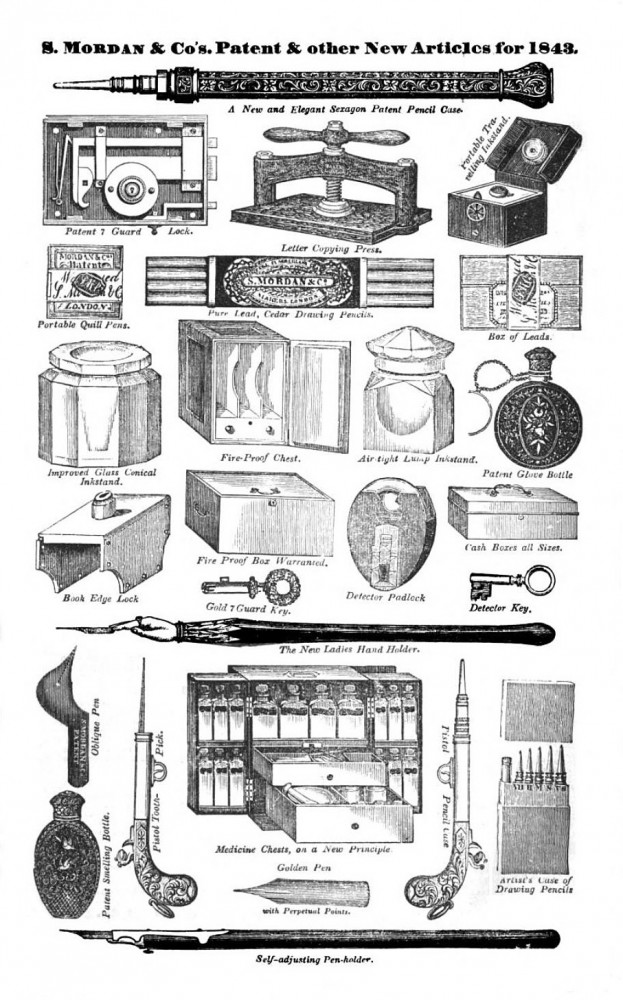
S. Mordan & Co. advertisement from 1843.
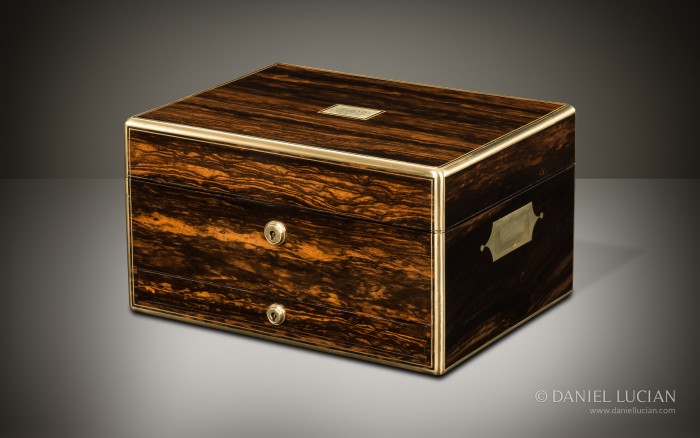
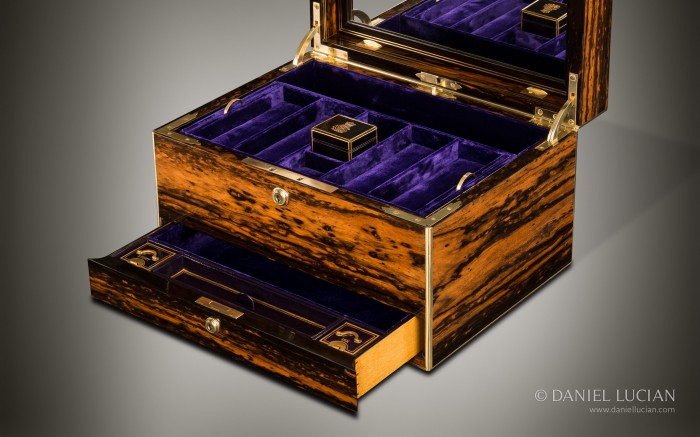
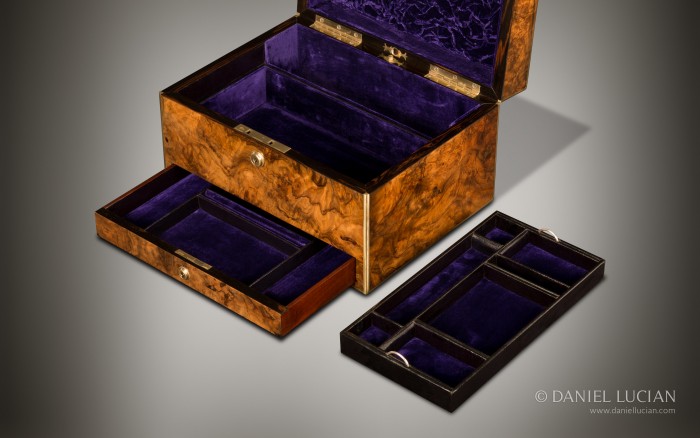
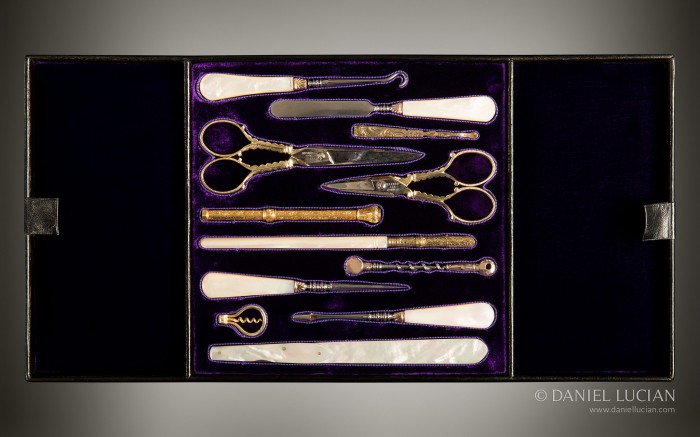
 Price On Application
Price On Application